Table of Contents
Over 80 bento box lunch ideas from a dietitian mom, to make your lunch-packing journey a lot easier!
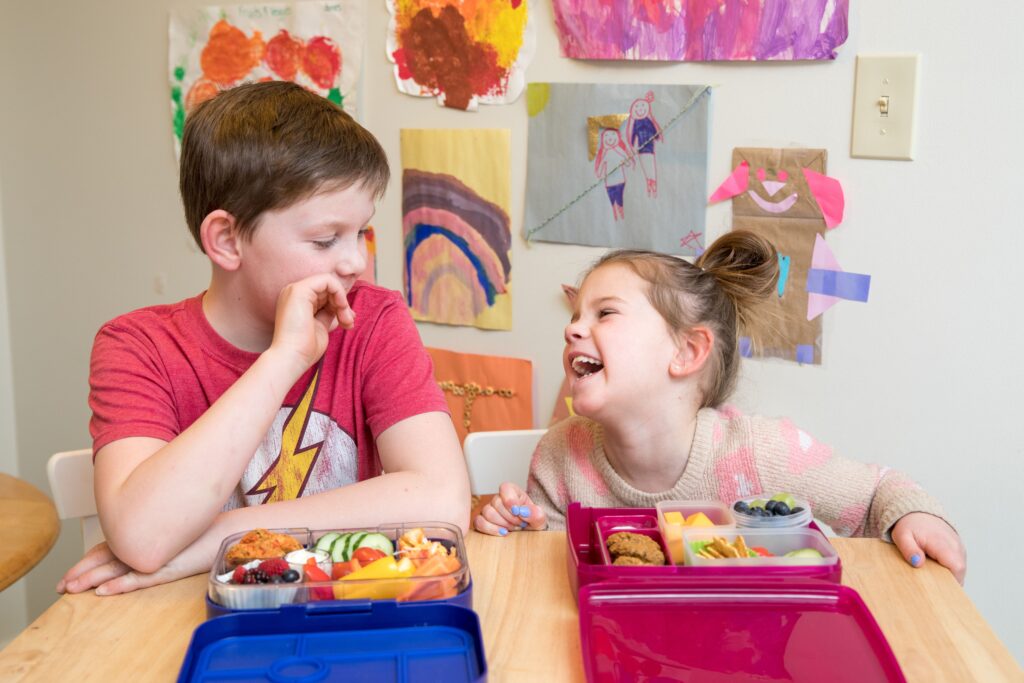
This post was written in partnership with my friends at What About Wheat?. As always, opinions are my own!
As a pediatric dietitian, I’ve always been on a mission to help parents breathe a sigh of relief when it comes to feeding kids. Whether it be helping them start solid foods with their baby, helping them navigate frustrating picky eating phases, or in this case, building nourishing school lunches that are easy to throw together, nutrient-rich and appealing to your kiddos. Sound like an impossible task?! Don’t worry – I’ve got you! I’ve got three school-age kids of my own (lots of practice!), and over 17 years of experience as a dietitian.
In this post, I’ll walk you through everything you need to know about building nourishing bento box lunches for your kids, from how to choose the best bento box (and why I highly recommend using them!), to which types of food to include, to how to get your kids involved and why this is so crucial. I’ll also include over 80 bento box-friendly ideas!
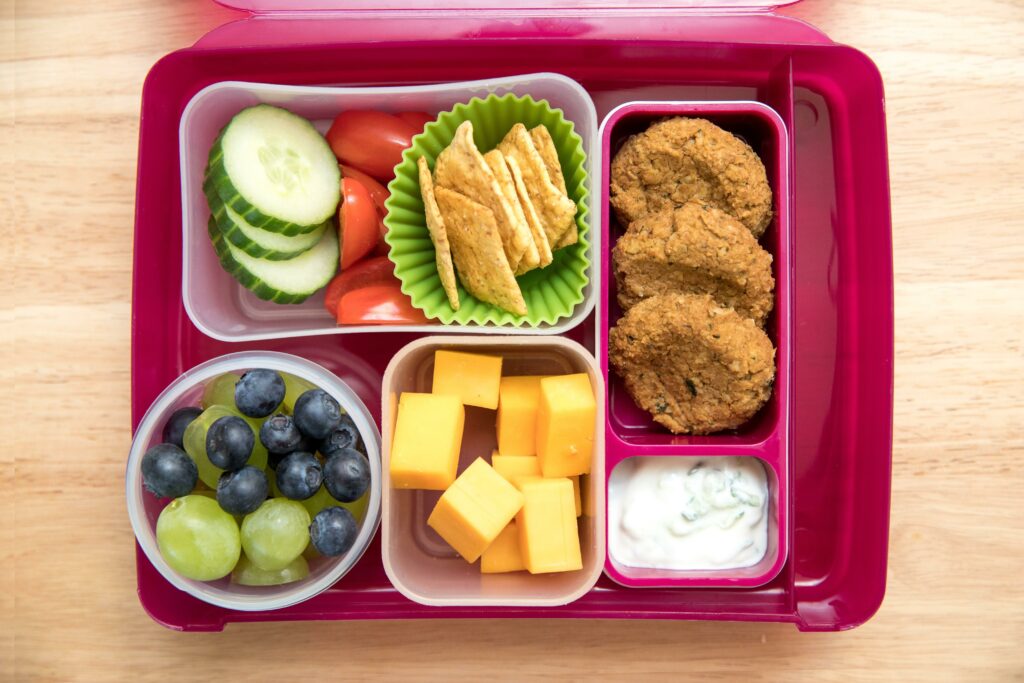
First of all, why use a bento box for school lunches?
I’m a huge fan of bento boxes for so many reasons. I’ve used them for as long as my kids have been in school, and quite frankly, can’t imagine not having them! One thing that I love about bento boxes is the fact that they cut down on packaging waste. Plastic bags and wraps aren’t really needed if you have a well-sealed bento box. Because of the multiple compartments, these boxes allow for more variety in foods, nutrients, colours and textures, which can actually encourage more exploration and render a more visually appealing lunch for your child.
I also find that bento boxes make packing lunches easier for both parents and kids. Having separate compartments can make the lunch-packing process more intuitive, with each compartment used for a different type of food. If you have a picky eater who is still learning to enjoy a variety of foods, being able to separate different foods into their own compartments (so that they don’t mix or “contaminate” each other) can be a huge benefit. They allow for some pretty delicious and creative lunch combinations too where kids can exercise their independence and autonomy in building their lunches and home, and picking and choosing which foods they’ll enjoy (and in what order) at school!
Now, if you don’t have a bento box lunch kit for your child, do NOT worry – it’s not imperative! You can still build a nourishing and appealing school lunch regardless of what type of kit, bag or box they have. I just find that they truly do make packing lunches easier and more streamlined. You can now find bento box lunch kits at various price points to fit your budget.
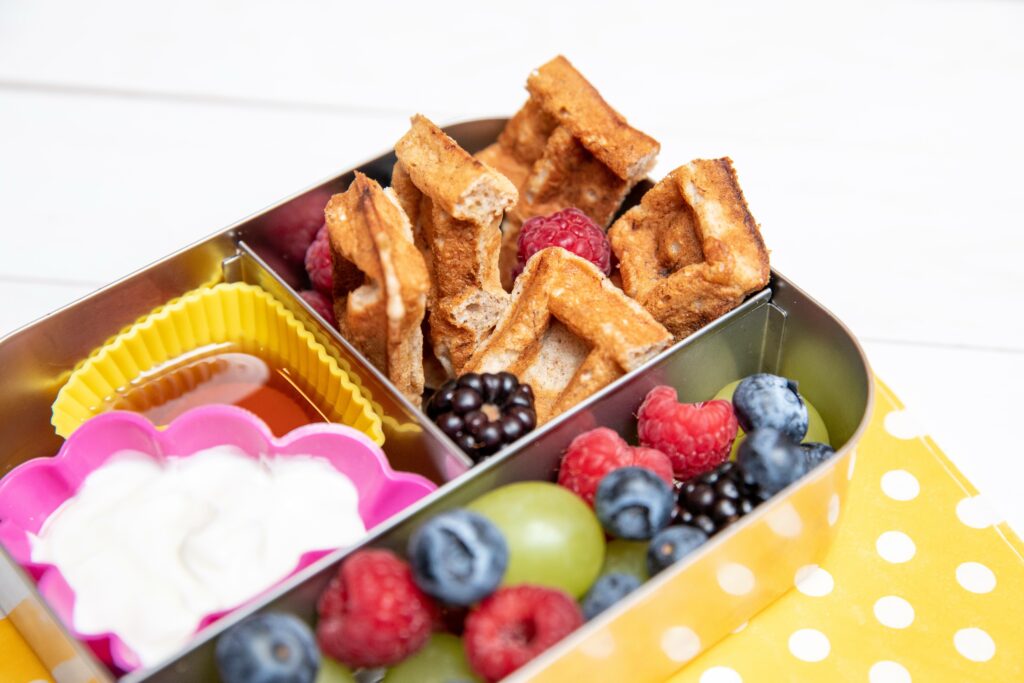
Why school lunch is so important for your child:
The lunch your child has at school is so important for many reasons! It is a key opportunity for your child to refuel with energy and nutrients after a morning of learning and activity. A time of nourishment where they get to sit down with their friends and enjoy a satisfying meal, that provides energy-dense foods like grains/starches, important vitamins and minerals from vegetables and fruit, as well as essential protein building blocks, from foods like dairy, meat, fish, legumes, nuts and seeds.
School-aged kids have rapidly changing bodies that require specific nutrients (such as protein, iron, calcium, zinc, B vitamins, vitamin A, vitamin C, vitamin D, and Omega 3s) for proper growth and development. School lunches packed with a variety of foods, both familiar and new to your child, will help support their growth needs while nourishing their relationship with food.
Hmm, now that all sounds fine and dandy, but what happens when your kiddo comes home with an uneaten lunch?
I am here to reassure you that this is totally normal! It’s important to give your child the space to eat what they need/want, without pressure to finish what is packed. To help improve chances that they will engage in their packed lunch, get them involved in putting it together, and always include a familiar food! For example, I always pack bread, crackers or a baked good in my kids’ lunch, because I know it’s familiar and comforting to them. The wheat-based foods that they grew up with provide a great source of energy, fibre and B vitamins, while also filling the role of having something familiar in the lunch box. This helps to make new food exposures more positive and less scary!
What should you include in your child’s bento box school lunch?
I always include 4 key items in my child’s lunch, and then after that, fill in the gaps with extras if needed. My rule of 4 is as follows:
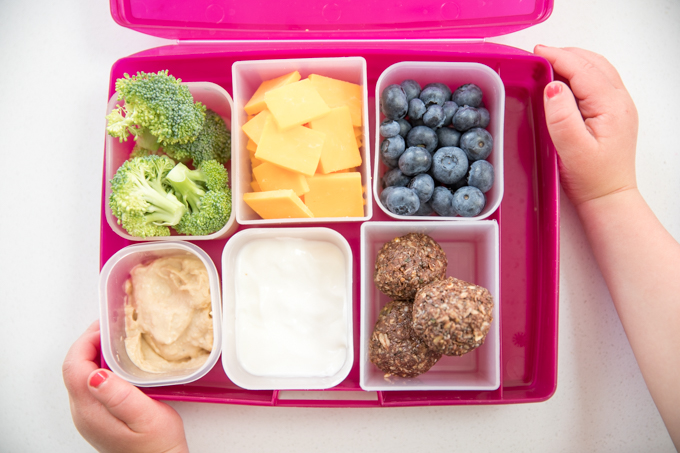
#1: Something with colour (aka a fruit and/or vegetable)
These can be fresh, frozen or canned (whatever works best for you). Fruits and veggies contain dietary fibre, vitamins and minerals and they add a punch of colour to your child’s lunch. Essential vitamins A and C found in produce provide your child with antioxidant protection to help strengthen immune function and promote healthy cell growth. Vitamin A is specifically important for developing healthy vision, while vitamin C aids in iron absorption and wound healing.
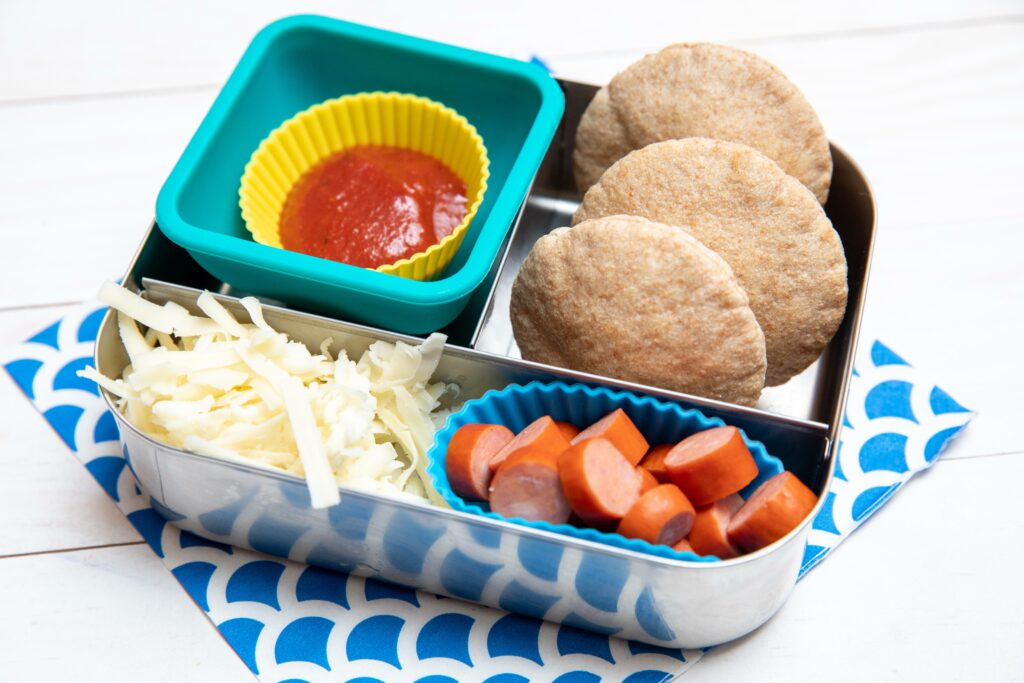
#2: Something for energy
Carbohydrate-rich starchy foods like bread, tortillas, and pasta are not only going to provide your kids with fuel and energy but also dietary fibre, vitamins, minerals AND … pleasure (let’s be honest). Whether they’re whole grain or white, they’re ALL good. In Canada, white wheat-based foods are always fortified with essential micronutrients like iron, niacin, riboflavin and folic acid, so your kiddos aren’t missing out! The wide range of B vitamins found in wheat-based products support energy production, red blood cell formation and healthy brain development in school-aged kids. Zinc and magnesium are also found in whole wheat products which are key nutrients in supporting growth, hormone and enzyme activity, bone health and much more! Whole grain flour is rich in fibre, vitamins and minerals and contains the bran, germ and endosperm part of the grain. It’s often called whole grain flour, 100% whole grain flour or 100% whole grain whole wheat including the germ.
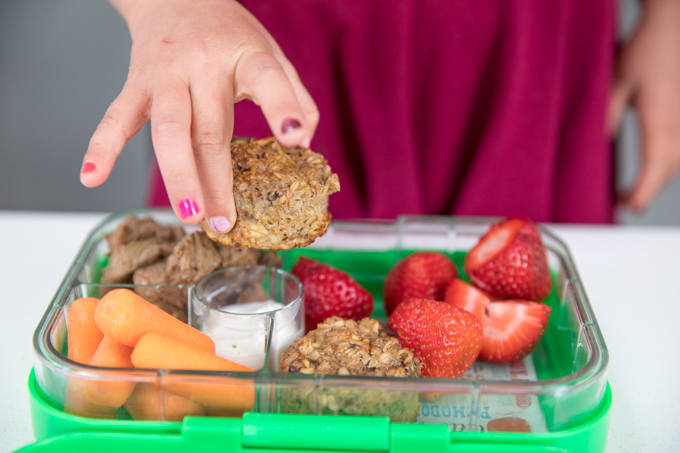
#3: Something with staying power
I always include at least one protein-rich food to help my kiddos feel fuller longer and extend their energy levels. Things like leftovers or deli meat, Greek yogurt, cheese, hummus, or seeds are some of my go-tos. Protein-rich foods provide building blocks for healthy, muscle, organ, skin, hair and nails. Fun fact: One cup of cooked pasta packs around 7.3g of protein (about the same as a large egg!). Protein-rich foods also contribute a significant amount of your child’s daily iron needs. Iron is key to red blood cell formation and oxygen transport around the body. This mineral helps to ensure that your child develops a healthy immune system, neurological system, and reaches their genetic potential in physical growth.
#4: Something snacky
This can be a granola bar, crackers, dried fruit bar, cheese string, homemade energy bite or muffin. This delicious homemade muffin recipe uses 2 types of wheat flour, and bran for the ultimate combination of nourishing flours! The result is a moist, nutrient dense and delectable muffin that is easy to grab for a portable snack.
Oh, and as a bonus, I often throw in something sweet, just because!
To fill in the gaps, you can add more of any of the above (for example, I often include at least one fruit + one vegetable) and maybe an extra starchy carb or protein-rich food. It’s up to you!
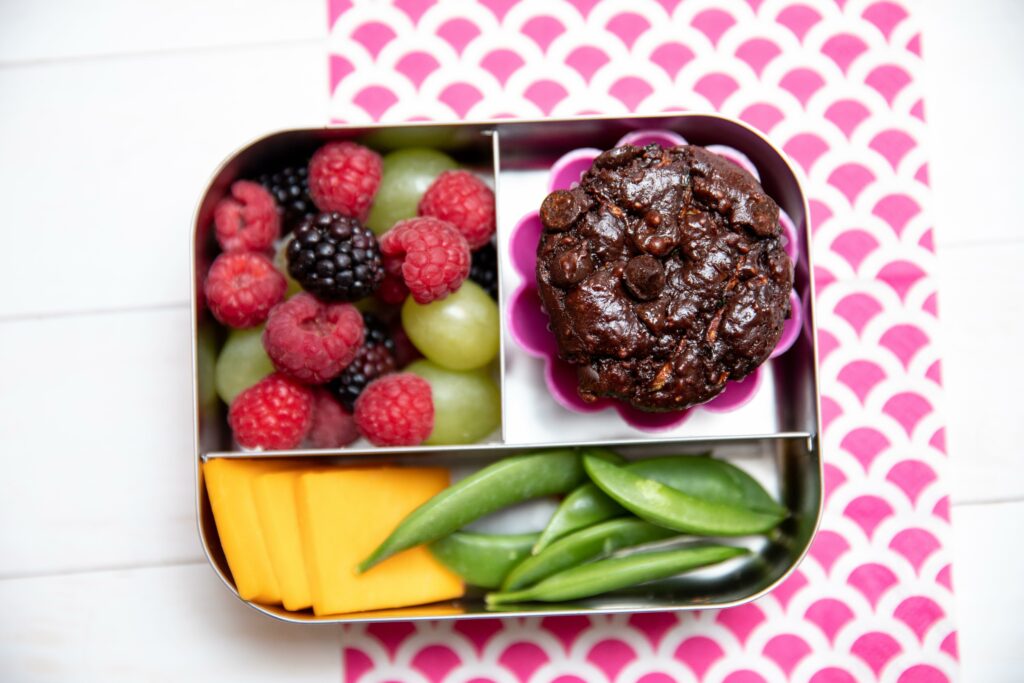
Here are over 80+ nourishing food ideas
Something for energy:
- Bread: Whole-grain, whole wheat or white bread for sandwiches
- Mini Bagels: Whole-grain mini bagels with cream cheese or nut-free spread.
- Crackers: whole grain or white – great for homemade “lunch-ables” paired with cheese and meat!
- Cooked pasta
- Cooked wheat berries
- Cooked quinoa
- Cooked rice
- Homemade muffins made with whole grain, whole wheat or all-purpose flour (give these whole grain pumpkin spice muffins a try!)
- Corn
- Popcorn
- Cooked potato or sweet potato slices or cubes
- Cooked couscous or bulgur
- Pita bread
- Tortilla wraps: whole grain, whole wheat or white
- Tortilla chips or taco shells
- Ready-made dry cereal
- Granola made with oats
Something Colourful (fresh, frozen or canned fruits and/or veggies):
- Berries
- Sliced citrus
- Melon cubes
- Grapes: red or green grapes (consider slicing them for younger kids)
- Apple slices: Toss with a bit of lemon juice to prevent browning
- Pear slices: Similar to apples, you can also add a touch of lemon juice
- Kiwi slices: Peel and slice kiwi into rounds or wedges
- Pineapple chunks: Fresh pineapple or canned pineapple chunks
- Mango slices: Slice mango away from the pit and then cross-hatch to create easy-to-eat cubes
- Fruit skewers: Thread bite-sized pieces of various fruits onto small skewers
- Mixed fruit salad
- Dried fruit bars
- Dried Fruits: raisins, dried apricots, dried cranberries, or other favorites
- Fruit Cups: pre-packaged fruit cups with options like peaches, pears, or mixed fruit
- Carrot sticks or coins
- Cucumber slices
- Bell pepper strips
- Cherry tomatoes
- Snap peas or sugar snap peas
- Celery sticks
- Broccoli or cauliflower florets
- Zucchini or yellow squash slices
- Baby spinach or kale leaves
- Snap peas
- Radish slices
- Steamed green beans
- Homemade veggie chips
- Rainbow veggie sticks: a mix of colorful veggie sticks like carrots, bell peppers, and cucumbers
- Tomato pasta sauce or salsa
- Avocado slices
- Veggie skewers: thread veggies onto small skewers for a fun presentation
Something with Staying Power:
- Leftover cooked meat or poultry
- Deli meat or poultry
- Cheese cubes or sticks
- Greek yogurt
- Hard-boiled eggs
- Hummus
- Nut-free nut butter alternatives: sunflower seed butter, soy butter, or other nut-free spreads with crackers or apple slices.
- Edamame: steamed and cooled edamame pods.
- Mini meatballs: small meatballs made from lean ground meat (e.g., turkey, chicken, beef)
- Tofu or tempeh
- Cottage cheese
- Mini quiches
- Seeds
- Canned tuna or salmon: flaked tuna or salmon with whole-grain crackers.
- Mini skewers: skewers with pieces of cheese, lean meat, and vegetables.
- Homemade chicken nuggets
- Roasted chickpeas
Something snacky:
- Granola bars: Look for nut-free and school-safe options or make your own granola bars
- Pretzels
- Energy balls/bites: store-bought or homemade
- Trail mix: nut-free trail mix with dried fruits, seeds, and whole-grain cereal.
- Rice cakes: Whole-grain rice cakes with toppings like nut-free spread or cheese.
- Yogurt cups: Individual containers of yogurt, either regular or dairy-free.
- Fruit cups: Pre-packaged fruit cups with diced fruits in their own juice.
- Popcorn
- Seaweed snacks
- Dried fruit
- Mini muffins
- Roasted chickpeas: crunchy roasted chickpeas in a variety of flavors.
- Yogurt tubes or drinks
- Chia pudding
Bonus: Something sweet!
- Cookies
- Squares
- Brownies
- Rice crispy treats
- Candy
- Chocolate
- Pudding
- Cupcakes
- Cake
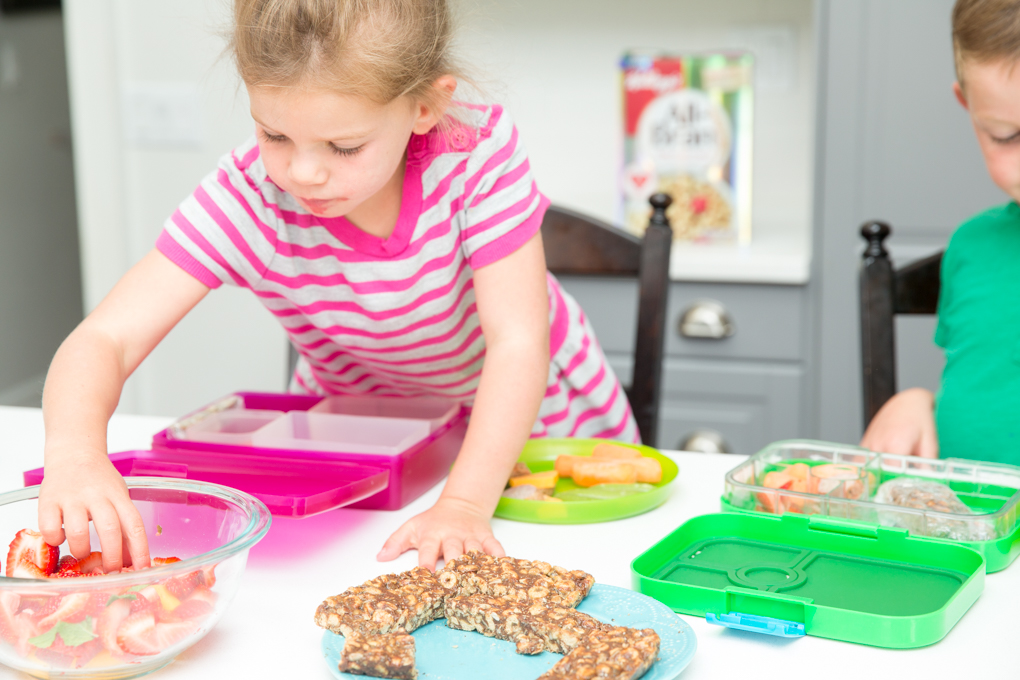
My nourishing favourite bento-box ideas:
- Leftover pasta + tomato sauce + cut up melon + homemade granola + cucumber slices + mini chocolate bar
- Whole grain bread and mayo + rotisserie chicken + spinach + dried fruit bar + yogurt cup + carrots
- Tortilla + turkey deli meat + avocado + baby tomatoes + pear + cookies
- Mini quiches + sugar snap peas + hummus + mini muffins + banana
- Wheat crackers + cheese + pepperoni slices + rainbow veggie sticks + sliced apple + grapes + cookies
- Chicken noodle soup (with carrots and celery) + strawberries + granola bar (nut free) + chocolate pudding
- Boiled eggs + fruit cup + energy balls + readymade dried cereal + carrots and cucumber
- Boiled wheat berries + leftover salmon + leftover green beans + rice crispy treat + apple sauce
- Sourdough bread + nut-free seed butter + Jam + cheese stick + green grapes + radish slices + gummy candy
- Leftover pasta + leftover lentil Bolognese sauce + bell pepper slices + trail mix+ brownie
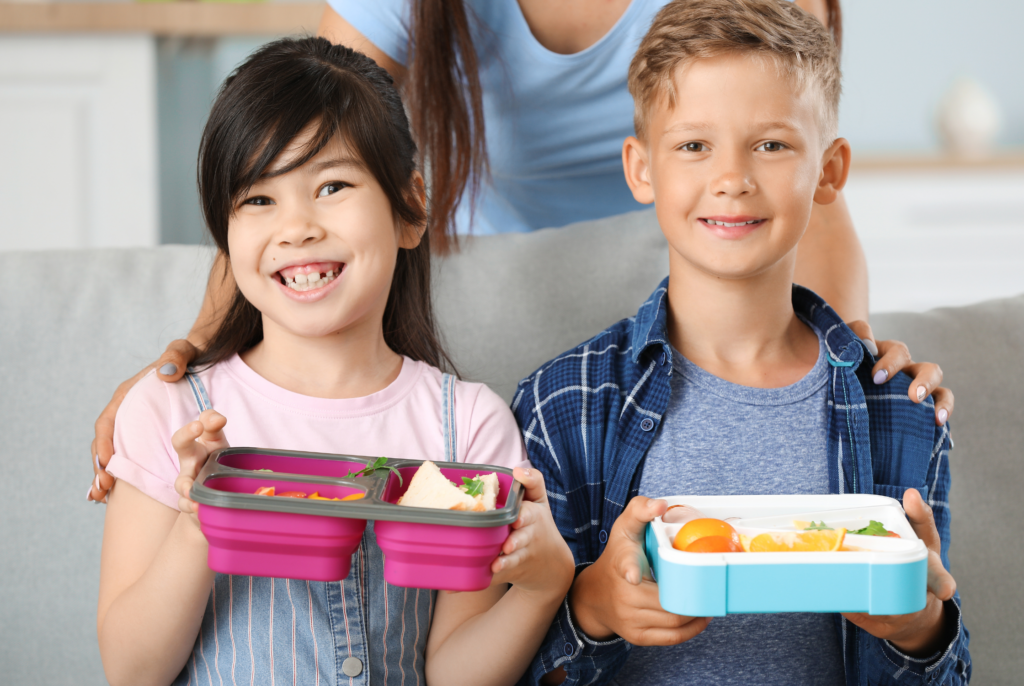
Ways to get your kids involved in packing their bento box lunches
Kids crave autonomy and independence as they grow. It’s a way of asserting themselves as their own person, on the path to learning what they are capable of! As parents, we want to give our children opportunities to nurture their independence, and one way to do this is to get them involved in packing their own lunch.
It’s basically a win-win-win! They are starting to help put together their own meals (whoo-hoo!), they are strengthening their capabilities and autonomy around food preparation, AND they will be more likely to actually eat the lunch they have helped plan and make.
Depending on the age of your child, you might have them involved from the beginning of planning, purchasing, preparing and packing their lunch, or you may only involve them in the 1 or 2 of the steps:
- Planning: Sit down with your kiddo and brainstorm or choose a few foods from each category listed above. Get them to choose 2-3 from each category so you can narrow it down at the end.
- Purchasing: Bring your child to the grocery store so they can help you find the foods on the grocery list. This helps fuel that need for autonomy while also nurturing a life skill in the process. To give them even more free reign, tell them that if they see a new food that piques their curiosity, they can add it to the cart!
- Preparing: Depending on your child’s age, ask them if they would like to help peeling and chopping veggies, or making their sandwich/wrap etc. Allowing your child to see, smell, taste and touch the foods (especially if they are new ones) helps them to become more confident around these foods, and more engaged in what goes into transforming them.
- Packing: This is a great step for all ages! Get your child to scoop, plop or pack foods in all the different-sized compartments available to them in their bento box! This is a fun activity for younger kids and it allows them to intuitively assemble foods in a way that makes sense to them for when they eat it later!
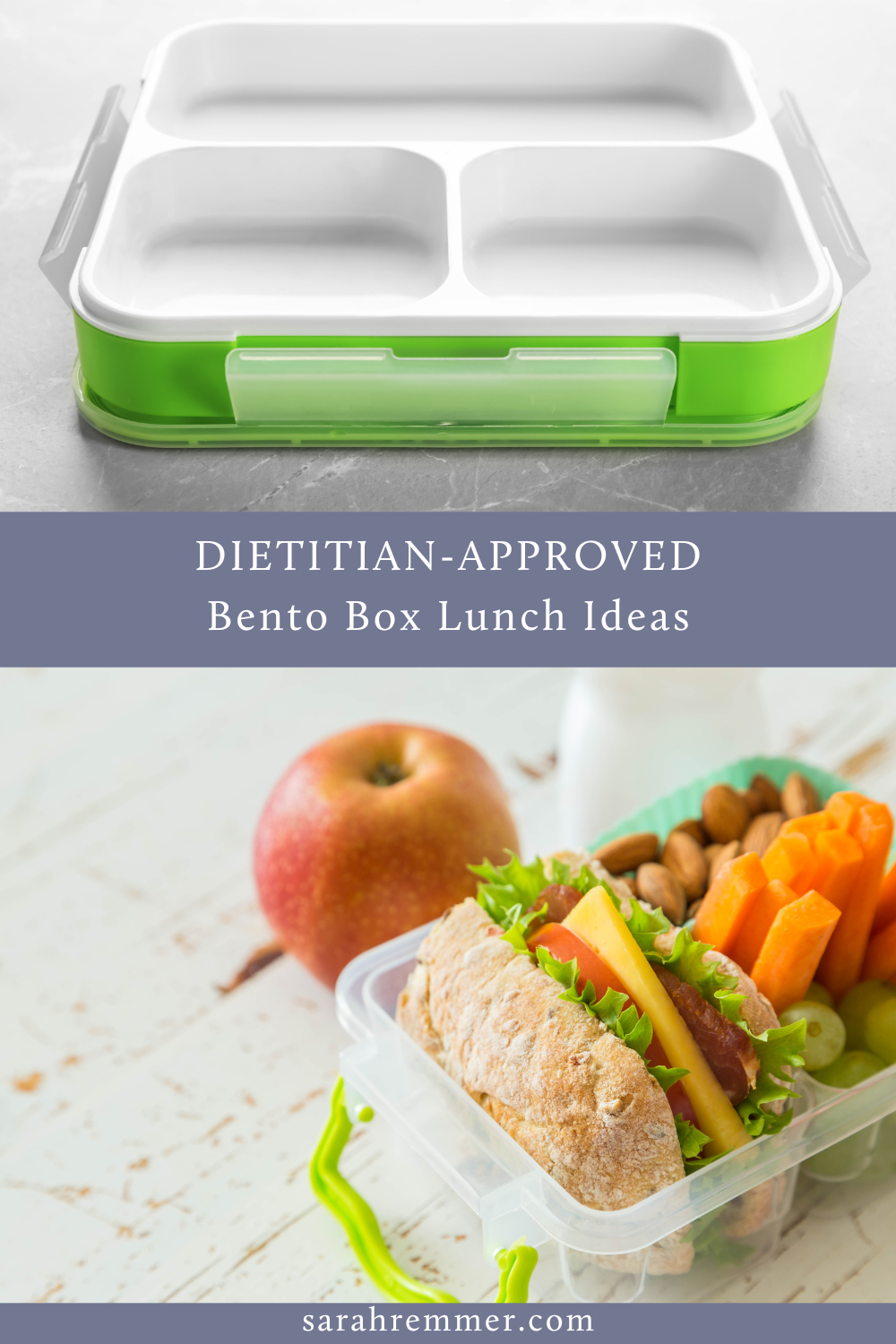

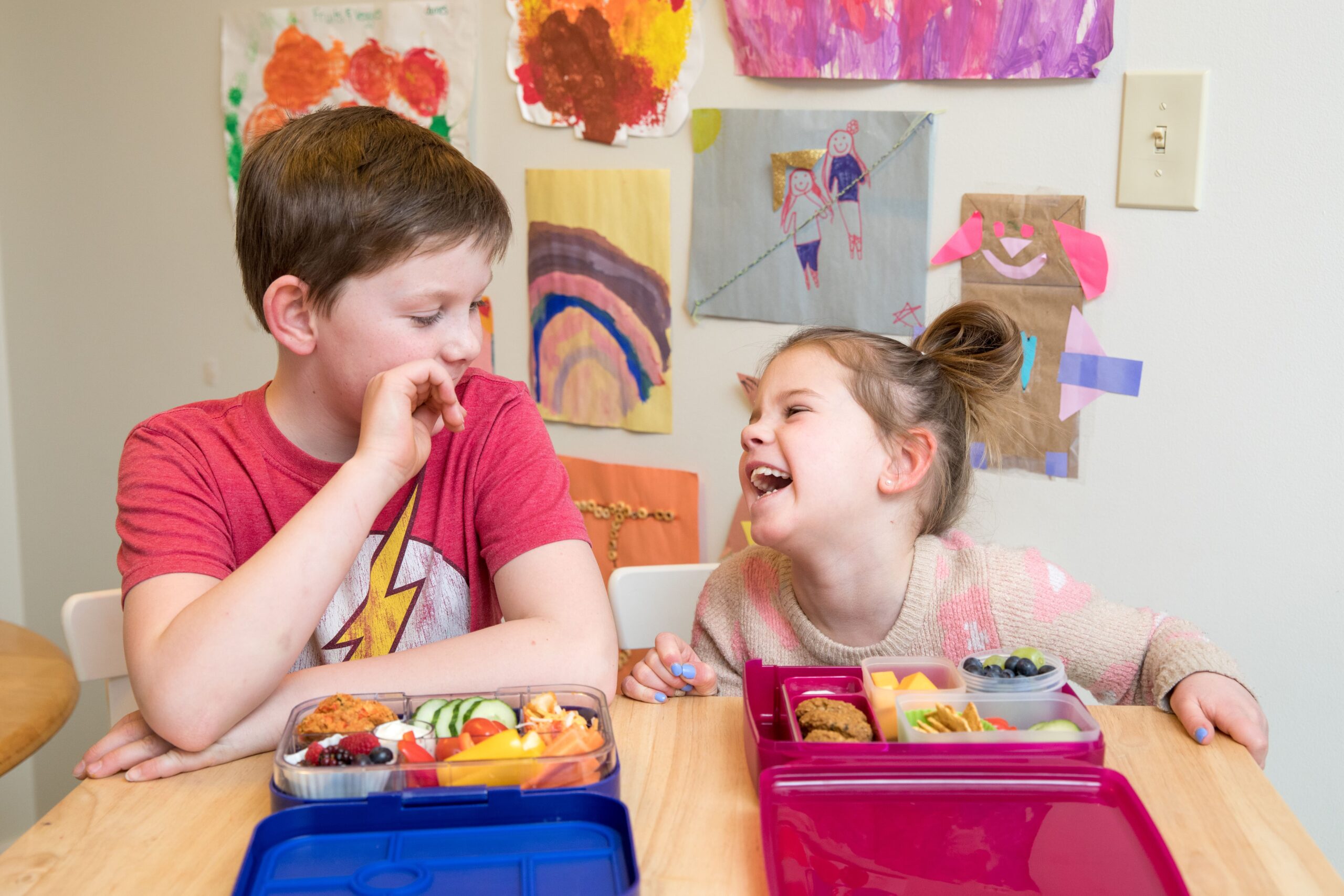



More Stories
Avocado Cacao Mousse – JSHealth
Janelle Brown on Garrison’s Mental Health Before His Death
How To Finally Beat Insomnia